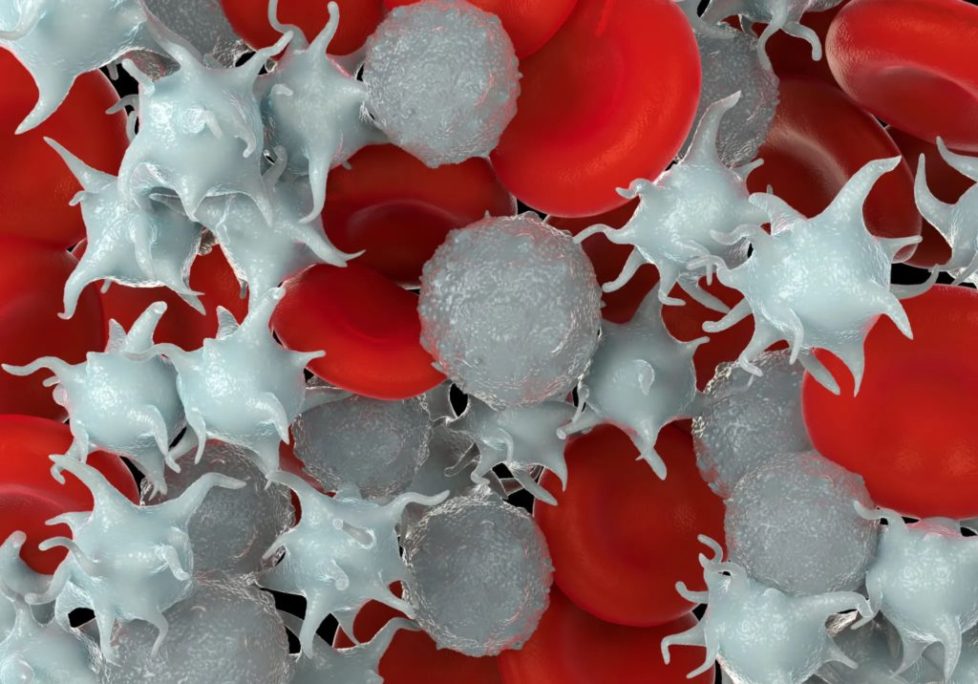
What is Essential Thrombocythemia
Essential Thrombocythemia (ET) is a myeloproliferative neoplasm characterized by elevated circulating platelets (thrombocytes). Platelets, like other blood components, are produced in the bone marrow. They are cell fragments, derived from megakaryocytes, that are essential for blood clotting. In ET these elevated platelets can cause undesired blood clotting or bleeding disorders.
Causes of ET
The cause of ET is not well understood, but most patients have a genetic mutation. Like other MPNs the mutation is not inherited but acquired. There can be a higher likelihood in some families to develop ET. About half of patients have the JAK2 (janus kinase 2) mutation (V617F). Some patients have a mutation called CALR (calreticulin), and fewer have the MPL mutation. It is not known what causes the mutations or what triggers the proliferation. People might have the mutation for years before developing ET.
Risk factors for ET
- Young women around the age of 30
- Men over the age of 50
- A genetic predisposition for ET
- More common than other MPNs, but still not a common disease
Symptoms of ET
Many people with ET are asymptomatic or have mild symptoms. For those that develop clotting issues, the symptoms of microvascular clots include:
- Headache
- Dizziness
- Visual disturbances or ocular migraines
- Coldness, numbness, or tingling in the hands or feet
- Burning, pain, or redness in the hands or feet
If clots develop in large blood vessels, it can be life-threatening. Some symptoms of large vessel clots are:
- Chest pain
- Headaches
- Weakness or fatigue
- Pain in arms, jaw, neck, or back
- Altered awareness or speech
- Loss of vision
- Shortness of breath
ET can also cause excessive bleeding due to abnormal platelets. This can manifest as nosebleeds, gastrointestinal bleeding, bleeding from the gums, and bruising easily.
Diagnosis of ET
The normal platelet count range is 150,000-450,000 platelets per microliter of blood. If a count is above 450,000, ET might be suspected. Other medical issues that could cause elevated platelets must be ruled out. Testing might include:
- CBC (complete blood count)
- Genetic testing of the blood (for JAK2, CALR, or MPL)
- Possibly, an examination of the bone marrow
Complications of ET
- Deep vein thrombosis
- Heart attack
- Transient ischemic attack (TIA)
- Stroke
- Progression to myelofibrosis or acute myeloid leukemia (rarely)
- Miscarriage for pregnant women
Treatment of ET
Some patients with ET can go years without symptoms. However, if a patient has a platelet count of over 1,000,000 per microliter of blood or has other risk factors for blood clot, such as being over 60 years old, having a history of blood clots or cardiovascular disease, or is symptomatic, the patient will likely be treated.
- Low-dose aspirin
This is a first line of defense for ET patients, if they aren’t at risk for bleeding and don’t have any other contraindication. It can inhibit tiny, microvascular clots that can cause headaches, visual disturbances, and burning hands and feet. It may prevent large blood clots by making platelets less sticky. - Hydroxyurea (Hydrea, Droxia)
This is still commonly used to lower platelets in high-risk individuals, though there is some risk of progression to acute leukemia, especially with long-term use. Hydroxyurea is a chemotherapy drug, so it can affect healthy cells as well as cancer cells. - Anagrelide (Agrylin)
This is sometimes used when other treatment doesn’t work, but is usually less effective and has side effects such as headaches, fluid retention, dizziness, and gastrointestinal issues. - Interferon alpha (Pegasys)
Interferon reduces platelet counts and might help prevent the formation of fibrosis in the bone marrow (progression to myelofibrosis). There are side effects, such as fatigue or flu-like symptoms, but these are often well-tolerated. It is the preferred treatment during pregnancy as it is thought to be safe for the baby. - Ruxolitinib (Jakafi)
After the JAK2 mutation was discovered, and found to be present in many with ET, Ruxolitinib was initiated for ET patients who did respond or were intolerant of other treatments. Ruxolitinib is an immunosuppressant that targets the JAK enzymes, which regulate platelet and blood cell production. It can also ease some constitutional (whole body) symptoms if present. - Plateletpheresis
This is a treatment of removing platelets from the blood, used only in emergency situations, such as a stroke or blood clot. It lowers platelet counts temporarily.
Prognosis
ET patients can have a normal life expectancy, especially with careful monitoring and appropriate treatment if needed. They may even have very few symptoms for several years. Some may develop myelofibrosis, usually after many years. A very small percentage progress to acute leukemia.
